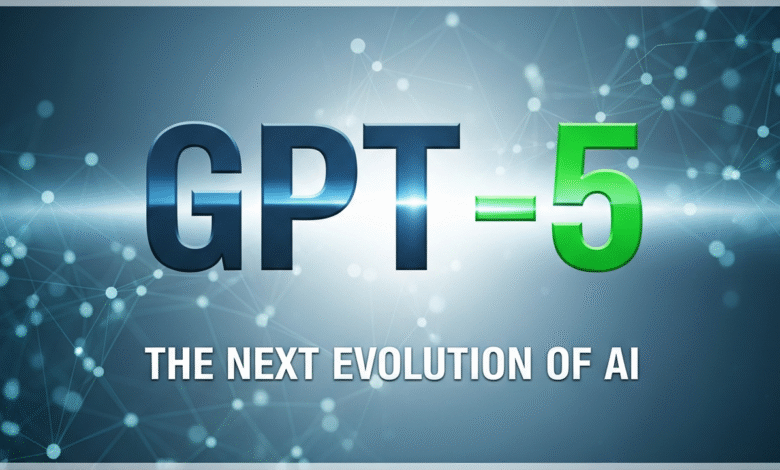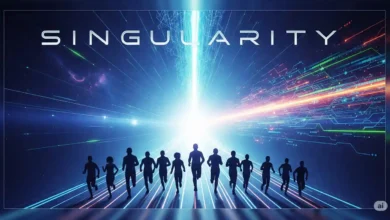GPT 5 Is Coming: What Does It Feel Like To Think With an AI That Can Think for Itself?

Imagine playing a grandmaster at chess—not just one match, but several simultaneously. You notice, with a twinge of disbelief, that this grandmaster isn’t just playing—he’s learning your style and outmaneuvering you faster in each game. Now, picture realizing that your strategies, honed for years, make you feel more like a puzzle than a rival.
Recently, Sam Altman, CEO of OpenAI, had a similar reckoning. On a podcast, he recounted: “I felt useless relative to the AI in this thing that I felt I should have been able to do, and I couldn’t, and it was really hard. But the AI just did it like that. It was a weird feeling”. The leap in capability was not just a technical milestone, but an emotional one—a recognition of both rivalry and awe.
As GPT‑5 draws near, we’re left asking: Is this the moment when the assistant turns co‑creator? Will this AI merely answer better, or is it learning to think with us—and maybe even for us?
Timeline & What We Really Know
In today’s world, rumors run faster than facts, but here’s what stands out amid the signal and the noise:
- Launch Imminent, August 2025: Multiple reputable sources, including The Verge and Reuters, have pegged an early August 2025 release window for GPT‑5, with “mini” and “nano” versions set to arrive via API and Microsoft Copilot. Altman’s statements on X and recent podcast appearances confirm the model is on its way “very soon”.
- What’s in Testing: Since late July, advanced users have reported new “reasoning” and “auto” engines inside preview builds of ChatGPT. These have shown up in smart mode logs in Microsoft Copilot, with code and compatibility reviews ongoing. GPT‑5 has reportedly outperformed not just prior OpenAI models but also public benchmarks like Claude 4 Opus and Gemini 2.5.
- Features Still In Flux: Leaked screenshots and early tests show advanced memory, multimodal processing, and lateral reasoning, but OpenAI has cautioned that some trial features—like IMO (International Math Olympiad) gold-level reasoning—were experimental. Not every feature may be live on day one.
Bottom Line: The release is almost here, but with every claim comes a caveat—this is informed speculation, not a press release. We’re seeing the last clouds before what promises to be a paradigm-shifting storm.
Breakthrough #1: Reasoning + Multimodality in One Model
For years, “which GPT should I use?” has been a constant refrain. GPT‑3.5‑o? GPT‑4o? 4-turbo for speed, or chain-of-thought for accuracy? GPT‑5 aims to make that question obsolete. It merges the famed o‑series deep reasoning engines directly into a universal GPT base. No more mode-picking. The model decides if your request needs quick retrieval or a marathon of logic and deduction.
But why does this matter? Because GPT‑5’s context window may now exceed 1 million tokens. That’s enough to feed it an entire codebase, several weeks of project logs, or all your lecture notes—seamlessly, in one conversation. It’s a leap from simply “remembering” a few pages to truly working across an entire mental workspace.
Multimodality is now natively fused: text, audio, image, all in one session. A user can upload a day’s audio-meeting recordings, share code, and submit screenshots, then ask GPT‑5 to summarize patterns or catch edge cases—without ever switching modes.
The Tension: With so much flexibility, GPT‑5 now faces a new challenge: when should it go full “deep think” versus speedy summary? If your AI can process days of conversation in a single go, what uniquely complex problems become solvable? And is there comfort—or risk—in an AI that no longer needs “reminders” to stay up to speed?
Imagine if your AI could quietly “catch up” on your year-to-date query backlog—what impossible tasks would now feel routine?
Breakthrough #2: Persistent & Goal‑Aware Memory
One of GPT‑5’s most anticipated innovations is session‑spanning memory. Instead of starting every chat tab with a blank slate, GPT‑5 builds a persistent, user‑scoped memory: it remembers your tone preferences, long‑term projects, and ongoing goals—even months apart.
Picture a novelist who scatters chapter snippets, plot beats, and side notes every few weeks. Six months later, she drops a rough half-draft and says, “please, pick up where I left off.” GPT‑5 can now connect those fragments, stitch narratives, and continue—without being spoon‑fed the history.
Of course, this brings big questions: Will OpenAI allow users to audit, edit, or fully erase what their AI remembers? How explicit (or obscure) will the power to view and delete memory be, especially in high-trust spaces like therapy or enterprise planning?
Imagine if your AI “knows” more about your aspirations and doubts than your manager or therapist. Whose memory is it—and who holds the final authority over forgetting?
Breakthrough #3: Agentic Task Execution
Is GPT‑5 an agent? Not strictly. But its architecture—fusing persistent memory, multimodal mastery, and robust context handling—means it can fuel agents that finally work as promised.
Recall the promises and letdowns of AutoGPT, BabyAGI, or coding bots that fizzled out after three steps. GPT‑4-based agents struggled with multi-step planning, tripped up by memory holes and context resets. GPT‑5 might change that. Smart companions can now review unfinished tasks, adaptively recall needed files, and trigger the right workflow—without humans micro-managing the “handoff” between subtasks.
In productivity tools, imagine an AI that notices your daily goals are slipping and offers a pointed reminder—or silently drafts a series of Jira tickets for your team, then updates your PM with clear progress.
If your AI can take real initiative, how much autonomy is too much? At what point does helpful become overbearing—or even disruptive?
Wider Implications: AI’s Next Frontier
– Industry Gravity Shift
Microsoft Copilot, the workplace AI layer, may soon switch to “GPT‑5 smart mode” for all users. This could grant Microsoft and its ecosystem a generational advantage overnight.
Will dominance by a single new model widen the gap between AI haves and have-nots? If so, who holds leverage—the platform or its users?
– Open Source vs Centralization
OpenAI will not release GPT‑5 weights, but plans a parallel open-source reasoning model—the o3-mini—after delays. Spanish news outlets and GitHub leaks suggest renewed excitement for open foundational models, not just walled gardens.
Will open research communities flourish, or will a “GPT‑5 generation” crowd out all but the biggest players? Does democratization stall when cutting‑edge power stays behind proprietary curtains?
– AGI & Societal Oversight
Altman himself has likened the scale and speed of development to the Manhattan Project, warning of insufficient oversight. If GPT‑5 can be trusted with multi‑domain autonomous actions, heated AGI debates are sure to reignite.
How do we decide collective rules when progress moves faster than process? At what point does the tool become a peer—or a rival?
– Regulation & Misuse Risk
Longer memory and sharper logical reasoning make it easier than ever for an AI to summarize (or inadvertently leak) confidential or personal data. As persistent memory becomes table stakes, who audits what the AI remembers—and how is that secured?
If your company or therapist stores conversations with an AI, who can guarantee your privacy? Can any system “forget” on command once memory is a feature, not a bug?
Creative Futures: Real‑World Scenarios
- A Startup Founder’s AI PartnerAn early-stage startup CEO types, “get me to $100K MRR by Christmas.” Instantly, GPT‑5 maps a go‑to‑market strategy, fills the calendar with prospect calls, auto-drafts personalized pitches, and sets conversion markers. The CEO pivots to vision-setting, trusting the operations to AI.What if execution is fully automated—does leadership become vision, or compliance?
- Research Libarian’s Dream AssistantIn a university library, a data scientist asks GPT‑5 to ingest a dozen public datasets and thousands of research PDFs. The AI cross-references footnotes, traces historical citation trees, and crafts narrative reviews, distilling months of inquiry into a single evening’s output.If knowledge sifting becomes instant, where does the real value of expertise shift?
- The Indie Filmmaker’s AI Co-EditorAn independent director uploads hours of dailies, rough script edits, and scattered storyboards. GPT‑5 generates shot lists, suggests scene transitions, and even drafts voiceover pitches based on evolving character arcs—not just cutting footage, but shaping narrative flow itself.When creative iteration becomes collaborative, is authorship enhanced or diluted?
Conclusion: Open Questions
We are entering uncharted territory: an era where GPT‑5 may act as intelligence partner, co-creator, and—potentially—a new kind of policy problem. The boundaries between tool and teammate have never felt this unclear.
What’s your hope—and your unease—for AI that never loses the thread, that remembers your buried drafts, or quietly acts on your behalf? Would you trust it with your legacy, your secrets, your hardest unfinished work?
I invite you to imagine and respond: If GPT‑5 could finish one ongoing project for you, what would it be—and why? Or, more provocatively: what would worry you most if your AI learned “too well”?
Drop your thoughts below, or start the conversation with someone you trust. The next move, for once, may be entirely up to us.
Follow InZenFlix on Social media. Click here.
